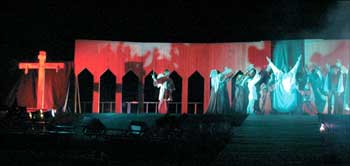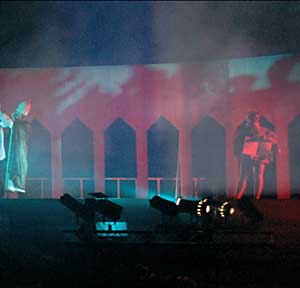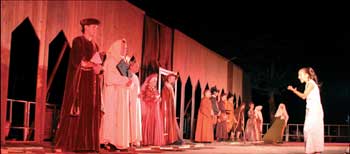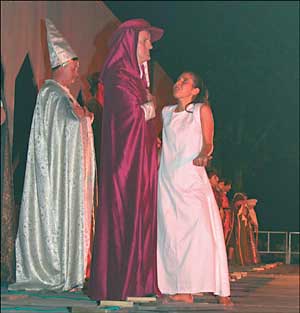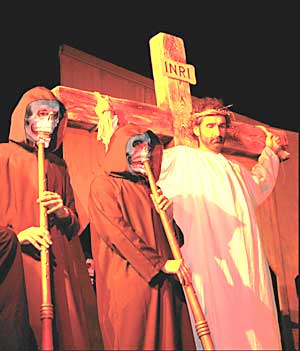“Io son la morte che porto corona.
Sonte signora di ogni persona et
cossi son fiera forte et dura che
trapaso le porte et ultra le mura”.
(“I am the Death and I wear a
crown, I am the Lady of every mortal
being, and I am so proud,
strong and hard, that I can walk
though doors and walls”.)
These are the words written on the south wall of S.Vigilio
church in Pinzolo, and which accompaign the frescos of the Danza
macabra painted by Simone Baschenis from Averaria in 1539 to
order of the “Beaten Brotherhood” in Sopracqua.
The Baschenis, painters from the Bergamo area, worked for over
a century in the western part of Trentino, as well as in many
places of western Europe during the XV and XVI centuries.
The “danze macabre” or “memento mori”
would be painted both inside and outside churches’ walls,
as a warning from the clergy to all believers in those times:
it was necessary to obey to catholicism, to work for it, to
have faith in it. The
fear for death subjugated everyone to faith, as it happens sometimes
today, too.
From these very paintings, Brunetto Binelli from Pinzolo has
managed to write an adaptation for the stage and a production
that the theatre company “Il Filò da la Rendena”
has been playing on open air stages from 2003.
The procession of the Beaten starts from the historical centre
of the village, to get to S.Vigilio church, gathering all characters
involved in the play. Some proceed on foot, some others riding
a horse. On stage, in a big square just in front of the church,
“the Death Queen”dances, involving all other characters
and takes them to death, passing through a door that will close
right after them.
The performance thus faces the absurdity of war against death.
The stage is then taken by a graceful girl who dialogues with
one of the characters portrayed by Simone Baschenis, i.e. the
Warrior, articulating a meditation on the nonsense and the stupidity
of no matter what
kind of conflict. The crucified Christ
follows from above all what is happening.
In the end, as he descends from the cross, the door of the dead
opens up and everyone comes back to life in an atmosphere full
of smoke and lights.
Together with the main characters (Silvia Salvaterra, Massimo
Lazzeri, and the dancer Tiziano Chistè), about a hundred
people are involved: walk-ons, workers and technicians.
An emotional and strong open theatre play, where light, music
and the costumes contribute strongly to impress deep inside
of us, indelible signs.
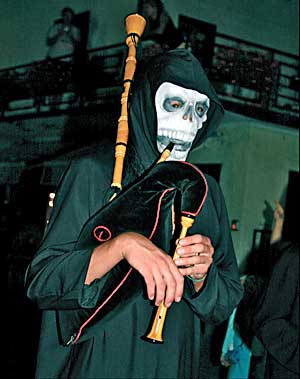
Death will come suddenly
and it will have your lips, your eyes.
She will cover you with a white veil,
falling asleep by your side,
in idleness, in dreams.
Fabrizio De Andrè
